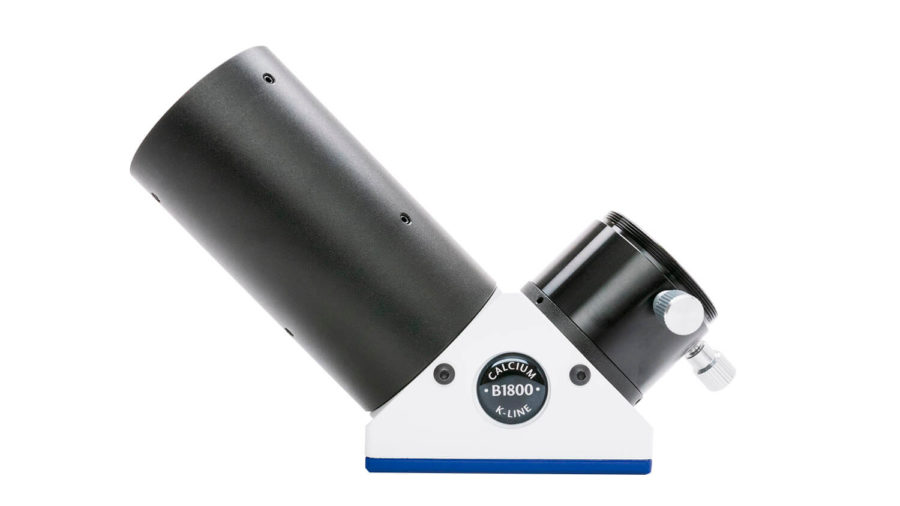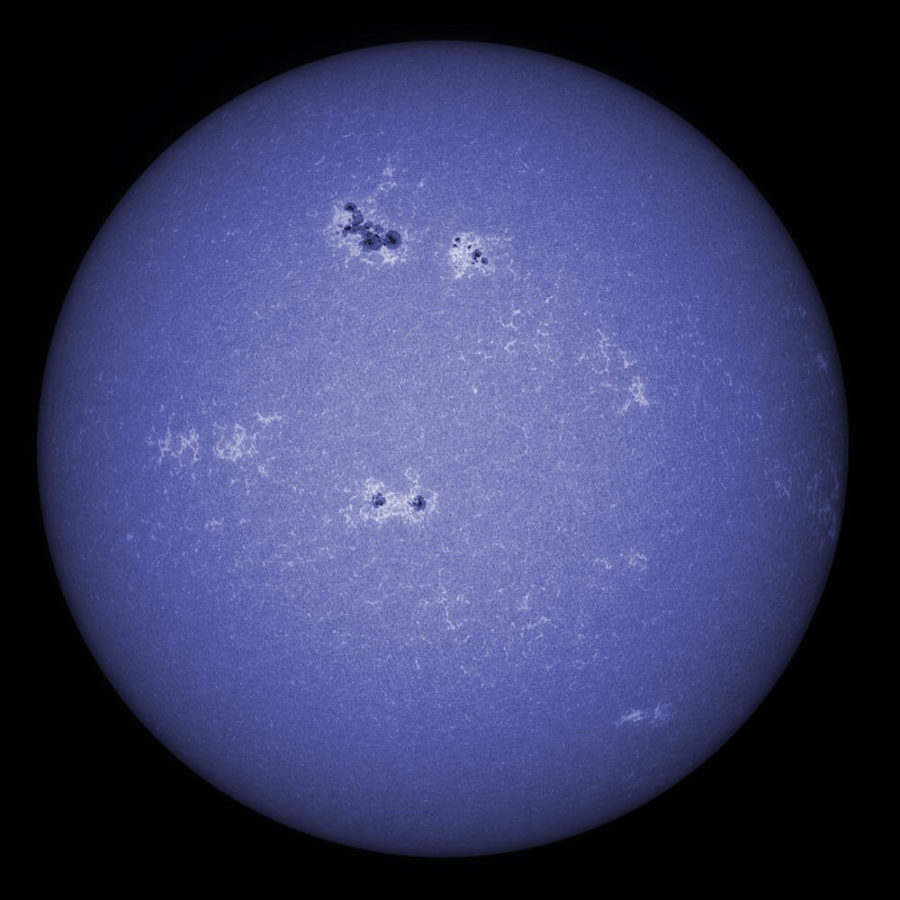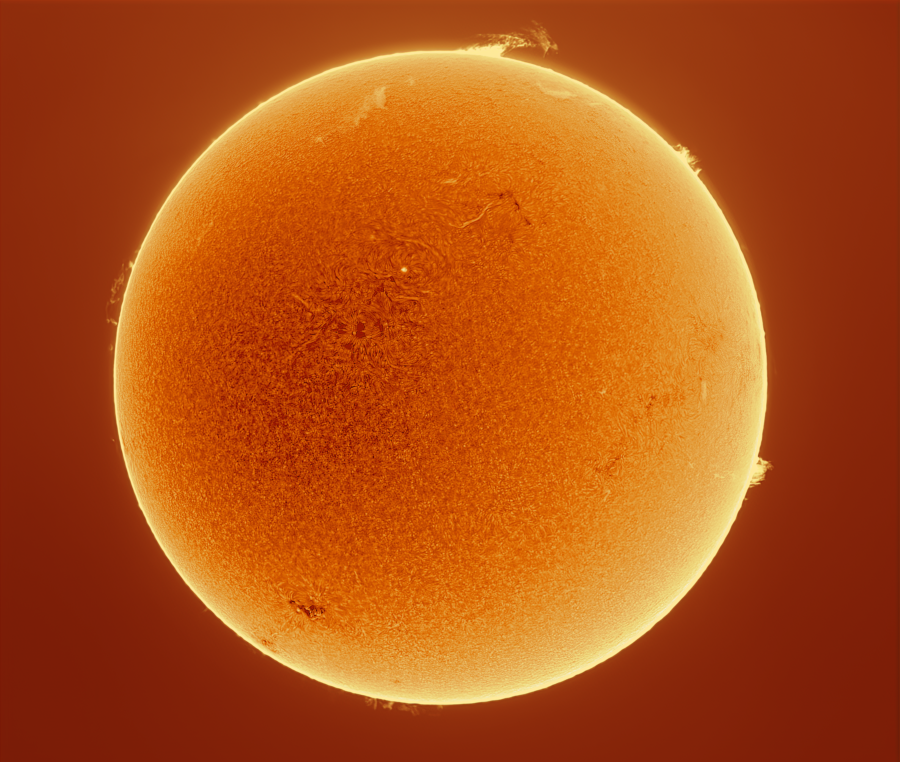
Viewing with Calcium K Telescopes
View the Sun’s magnetism via the Calcium K wavelength
Calcium K (Ca-K) viewing uses an interference filter to zero in on the wavelength of 393.4 nm. This emission line is one of two that are produced by Calcium just at the edge of the visible spectrum. Comparatively, this is in a layer of the chromosphere that is slightly lower and cooler than the layer viewed in Hydrogen-alpha.
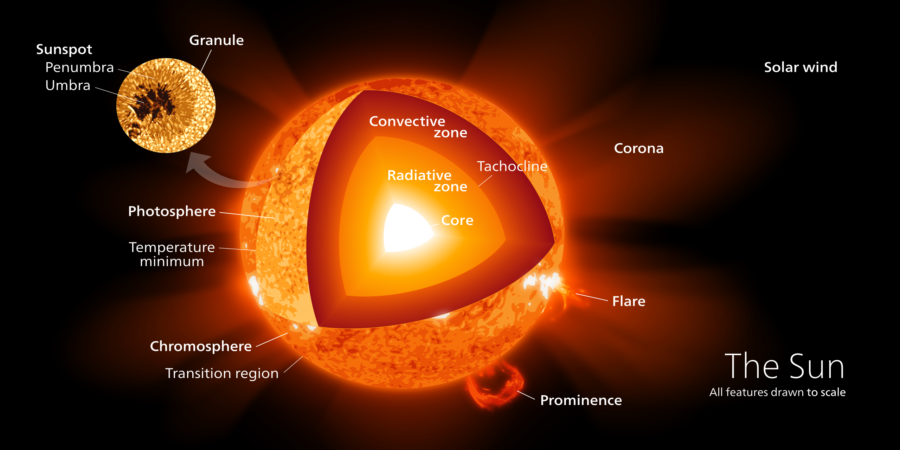
The emission line displays areas of super granulation cells that are brightest and strongest in areas of high magnetic fields, such as sunspot activity and active regions. This reveals some of the magnetic structure of the Sun, where bright sections show where magnetic fields are strongest.
The Lunt Calcium K Module
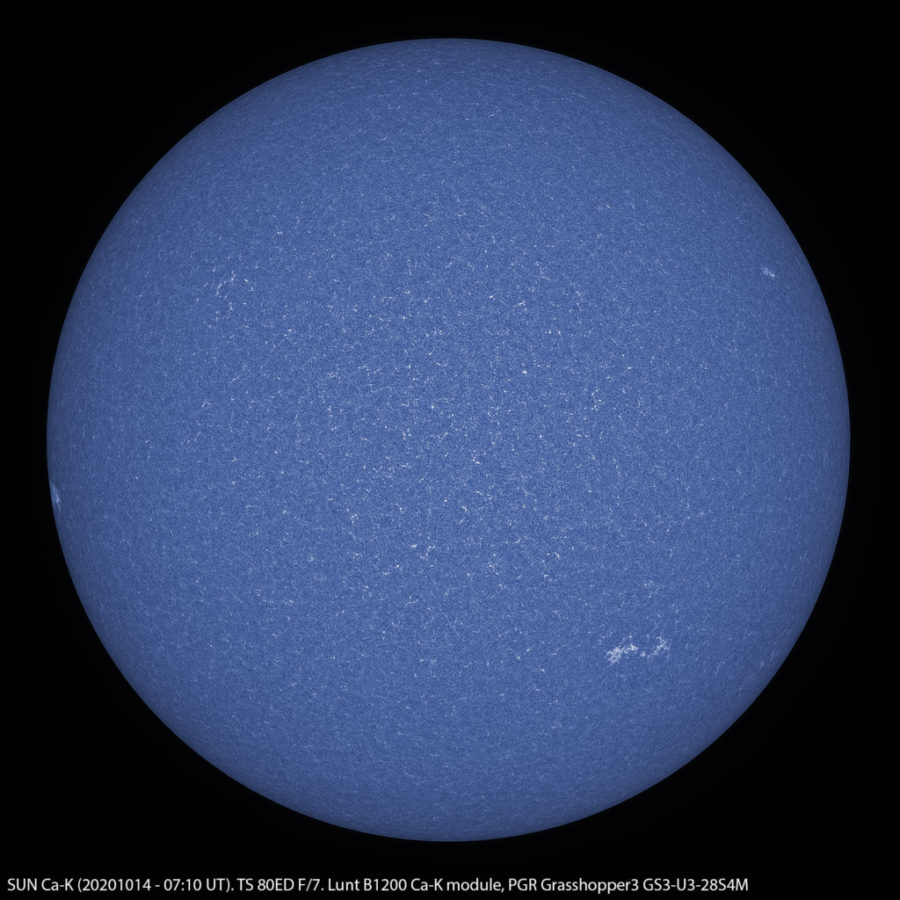
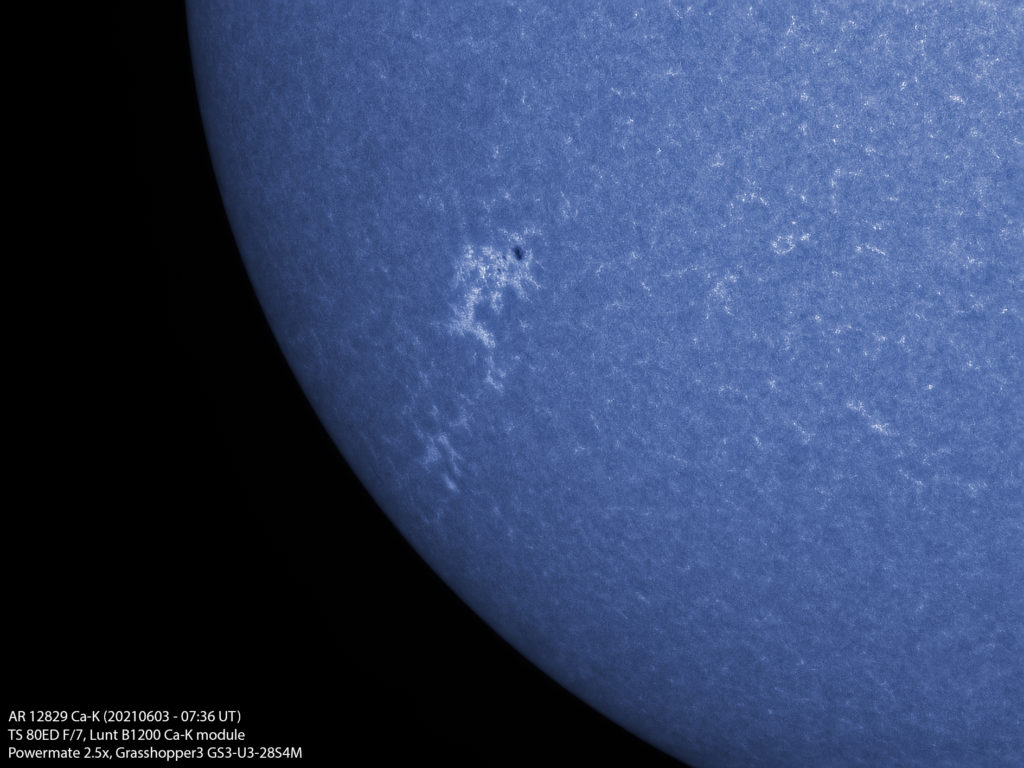
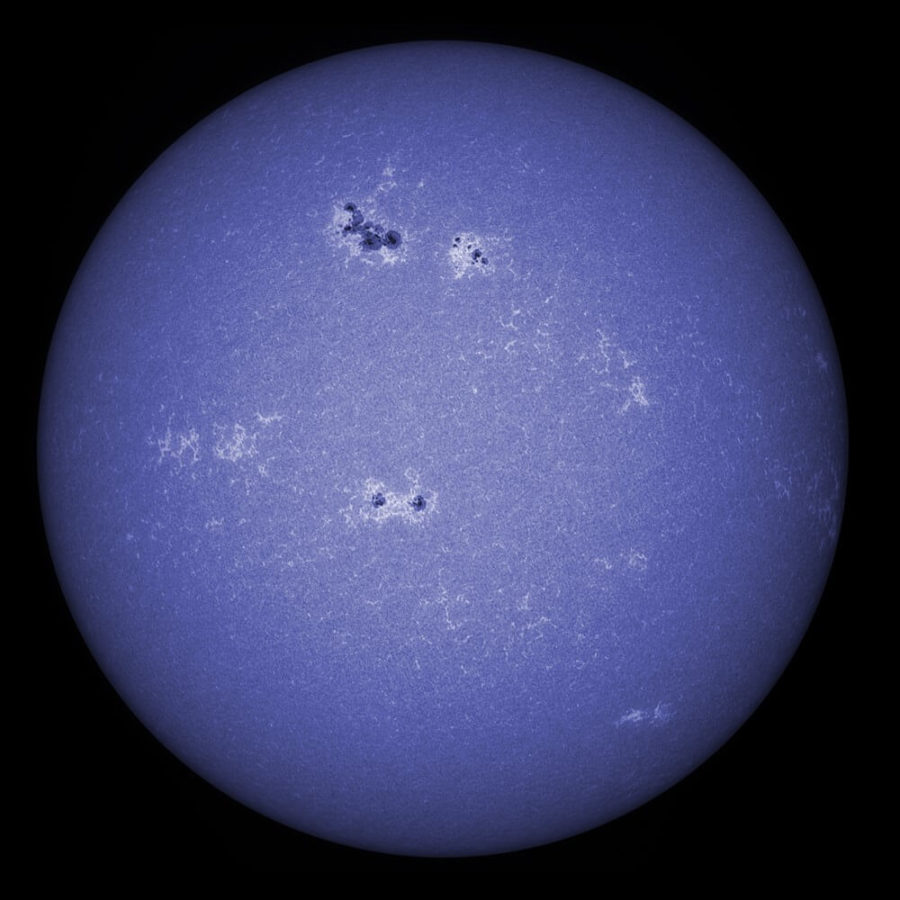

To view the Sun via Calcium K with your Lunt Universal Telescope, remove the H-alpha module and blocking filter, then attach a Lunt Calcium K Module to the focuser.
Having the ability to study the Calcium K and the Hydrogen-alpha lines provides important insights into the structure, strength, and depth of these active regions. Lunt Solar Systems Calcium K modules can be used with most standard night time refractors, or with Lunt’s new Universal Telescopes in their nighttime configuration!
All solar telescopes must have a blocking filter.
The Lunt Calcium K Module contains internal filters that make it safe to view the Sun. Its bandpass line is centered at 393.4 nm. This wavelength is considered to be slightly outside the visible spectrum on the ultraviolet (UV) side. Internal narrowband filters allow for a <2.4 Angstrom bandpass.
While most people can visually see the violet color of the wavelength, many cannot resolve the contrast due to yellowing of the cornea that comes naturally with age. People who have had cataract surgery are often able to see considerable detail. But due to the difficulty many people have seeing this wavelength, the Ca-K line is typically studied via the use of cameras, which are able to provide stunning details.
Calcium K viewing was highly specialized several years ago, but these days is accessible to people with smaller telescopes including Lunt Universal scopes.
Required Equipment By Viewing Type
A telescope needs different equipment installed depending on what type of viewing you’re doing. Here’s a complete list of what you’ll need for your Lunt Universal Telescope:
| Viewing Type | Required | Recommended | Accessories |
|---|---|---|---|
| H-alpha | Lunt Universal Day & Night OTA | Sol Searcher (standard on some Lunt OTAs) | Lunt H-alpha Double Stack Module |
| Lunt H-alpha Module | Lunt Zoom Eyepiece | Lunt PC1: Computer Controlled Pressure Tuning | |
| Lunt Blocking Filter | Tracking Mount | Barlow Lens | |
| Standard Eyepiece | BinoViewer | ||
| Dovetail | |||
| Mount | |||
| CaK | Lunt Universal Day & Night OTA | Sol Searcher (standard on some Lunt OTAs) | Barlow Lens |
| Lunt CaK Rear Module | Lunt Zoom Eyepiece | BinoViewer | |
| Standard Eyepiece | Tracking Mount | ||
| Dovetail | |||
| Mount | |||
| White Light | Lunt Universal Day & Night OTA | Sol Searcher (standard on some Lunt OTAs) | Barlow Lens |
| Front Mount or Rear Mount White Light Filter or Wedge | Lunt Zoom Eyepiece | BinoViewer | |
| Polarizing Filter | Tracking Mount | ||
| Standard Star Diagonal (If using front mount filter) | |||
| Standard Eyepiece | |||
| Dovetail | |||
| Mount | |||
| Lunar, Planetary, Deep Space | Lunt Universal Day & Night OTA | Red Dot Finder | Coma Corrector (for larger OTAs) |
| Standard Star Diagonal | Go-To Mount | Light Pollution Filter | |
| Standard Eyepiece | Lunt Zoom Eyepiece | BinoViewer | |
| Dovetail | |||
| Mount | |||
| Terrestrial | Lunt Universal Day & Night OTA | Lunt Zoom Eyepiece | |
| Standard Image Erecting Diagonal (45 degree recommended) | BinoViewer | ||
| Standard Eyepiece | |||
| Dovetail | |||
| Manual Mount |
Lunt Front-Mounted DoubleStack Filters also can be added to standard refractor telescopes to enable you to use your nighttime scope as an H-alpha scope. You’ll need a an adapter to mount the unit to the objective, and a Lunt Blocking Filter.
For your safety: After nighttime viewing, be sure to set up your Universal Telescope with the required solar modules before viewing the Sun!
Industry-Leading Quality and Safety

High Safety Standards
At Lunt Solar safety is our top priority. When Lunt Solar started making solar telescopes and filters, the subject of eye safety was at the forefront of our design. Our designs were approved by a senior ophthalmologist professor at a leading university of ophthalmology in Canada. A safety criterion was determined for both UV and IR transmission. This criterion basically set the bar at less than 1×10-5 (T) for any hazardous radiation.
Several standalone filters in Lunt products meet this criterion as a single unit. However, Lunt sets double and sometime triple standards for this requirement so that in the unlikely event one filter fails, the user will still be fully protected.
Because of the addition of multiple filters and safety features, a person simply standing in the sunlight will receive more ambient UV and IR radiation to the eye than when they are looking through one of our solar telescopes.
Lens Coating:
Lunt purchases our raw etalon glass materials from an ISO-qualified company on the East Coast of the United States. We grind, edge, bevel, and polish all the glass needed for the etalon and filter systems in-house in Tucson, AZ. Some coatings are outsourced to a facility that maintains a coating specific to our requirements.
Our coating facility has the required ability to produce anti-reflective coating at less than 0.1% reflectivity (R) (typically in the 0.06%R range). They also hold the high reflector coatings to better than +/-1%. The ability to control the coating processes to such high accuracy has allowed us to make precision modifications to the coating formulas, which have proven to increase contrast through the reduction of background noise.
Quality Assurance:
Each coating batch is provided with full scans of the coating applied and is certified to meet any and all safety requirements. Some of our precision-coated filters are provided to us from a US military-qualified company who provides full military certifications with every filter.
All Lunt Solar products are 100% safe when used as directed and are shipped from the factory free of any damage or defects. If a Lunt instrument is ever dropped or damaged, it should be returned to the factory for testing and re-certification.
Due to different optical arrangements in each design, a Lunt solar product should never be mixed and matched with components made by other companies.
One of the most important questions to ask when looking at a Solar Telescope is whether or not is has taken your safety into the highest consideration.
Does the system have redundant safety features to protect you if something should fail?
Does the system come with a Blocking Filter that contains additional safety features?
